Know the Block
In this section, you will learn what a block is, how to use it, and how to delay its execution and handle errors.
What is Block?
Blocks are the smallest units used to building recipes. Tapicker provides a rich library of blocks, each with distinct functionalities. Based on their functionalities, they are categorized into four main types:
- General: These are general-purpose blocks, such as Set Variables and Extract Data.
- Flow: These blocks are used for flow control, such as Loop, Condition, and Sleep.
- Browser: These blocks control browser actions, such as New Tab and Refresh Page.
- Interaction: These blocks interact with web pages, such as Click Element and Input Text.
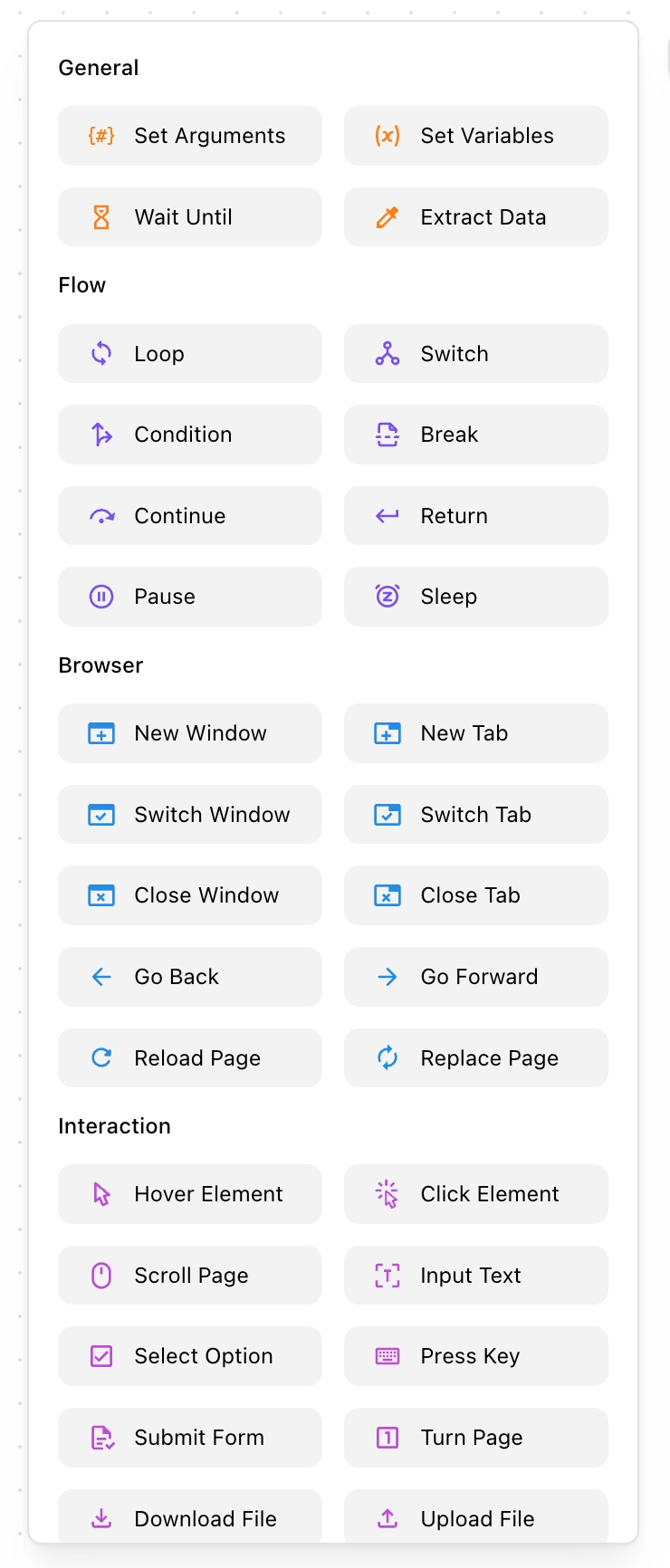
How to use?
Simply drag and drop blocks onto the canvas to use them. Blocks can be freely combined with each other, offering great flexibility and versatility. It's like playing with building blocks, where you can create amazing things.
Execution Order
Blocks are executed sequentially from top to bottom. The second block will not execute until the first block is complete. If a block contains sub-blocks, it will wait for all sub-blocks to finish before moving on to the next block.
For example. Search Google for “Tapicker” workflow.
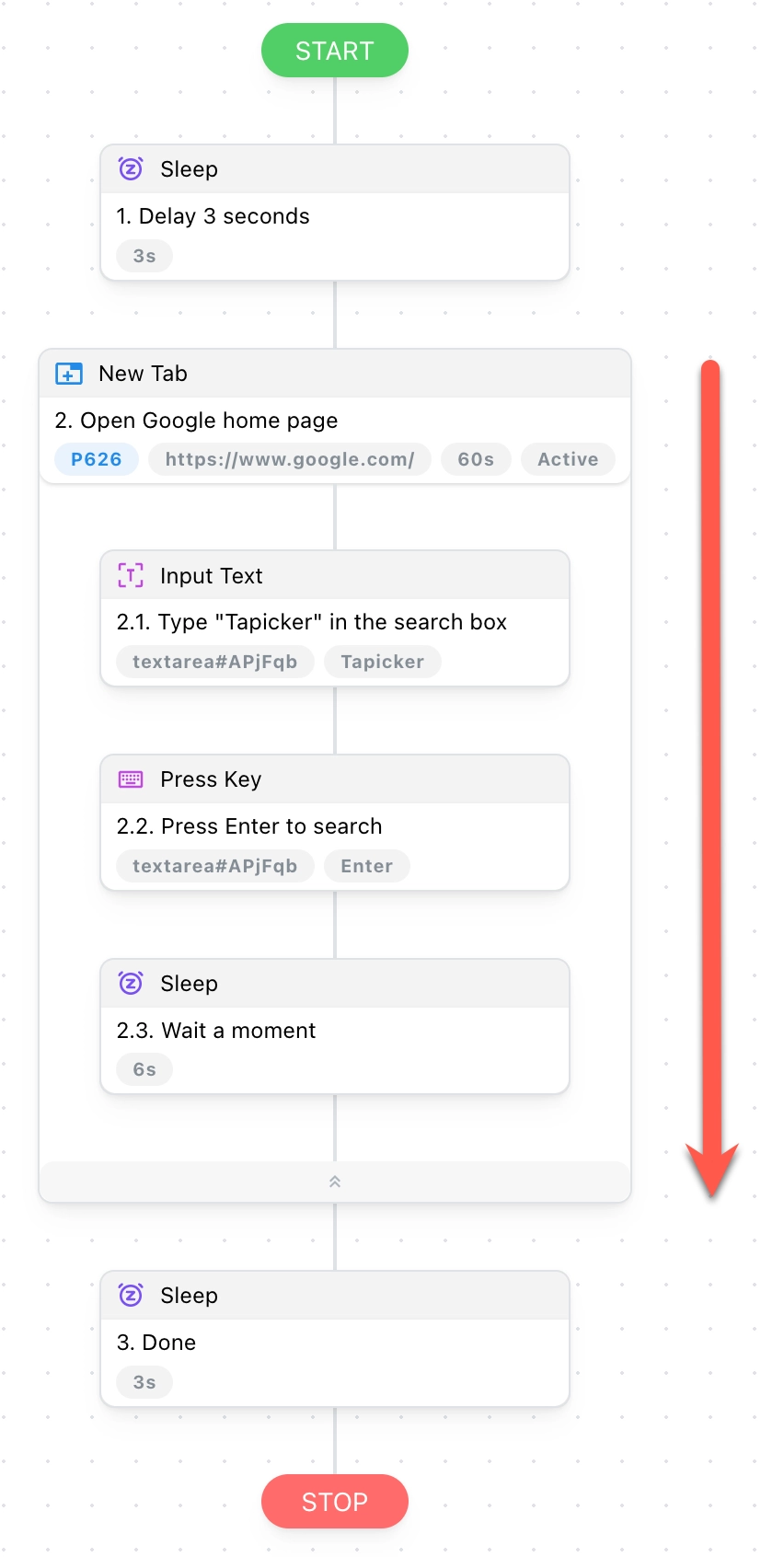
As you can see, it executes from top to bottom as expected.
Delayed Execution
Sometimes, we need to delay the execution of certain blocks. You can easily set a delay time as follows:
-
Fixed delay: Sets a specific, unchanging delay time. Such as delay 1 second.
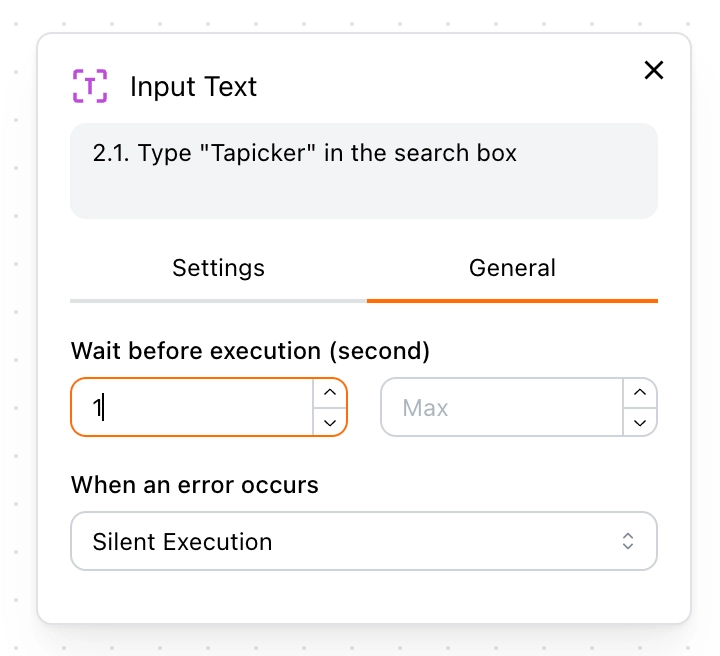
-
Random delay: Sets a delay time that varies randomly within a specified range. Such as delay 1 - 3 seconds.
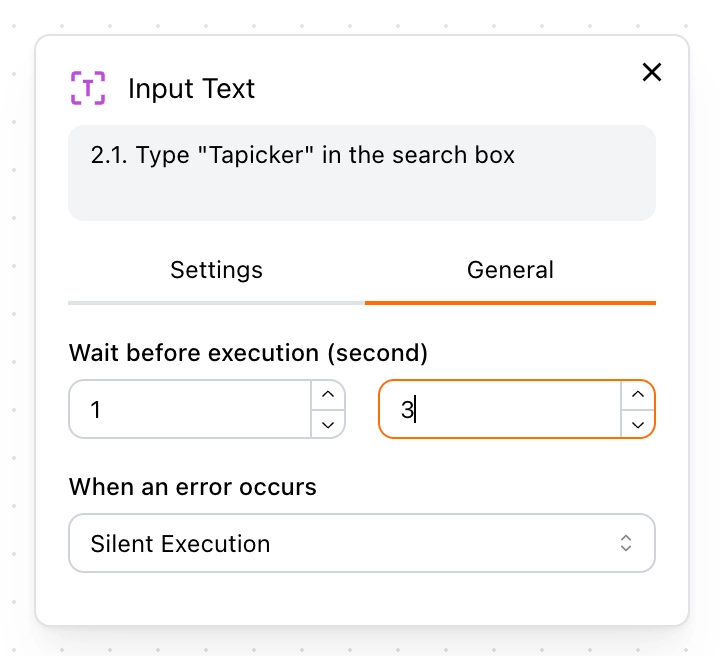
Error handling
Websites are dynamic and can change over time, causing blocks to fail due to updates. Implementing proper error handling can make your workflows more robust.
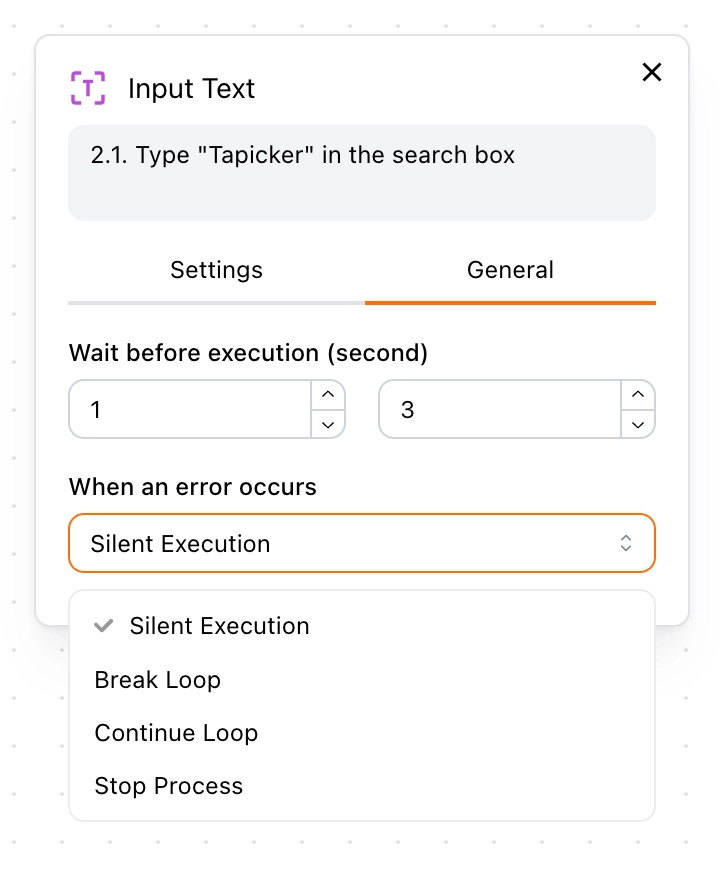
- Silent Execution (Default): This mode ignores errors and continues executing subsequent blocks, as if nothing went wrong.
- Break Loop: If an error occurs within a loop, the entire loop is terminated.
- Continue Loop: If an error occurs within a loop, the current iteration is skipped and the loop proceeds to the next iteration.
- Stop Process: This mode terminates the entire process if an error occurs.